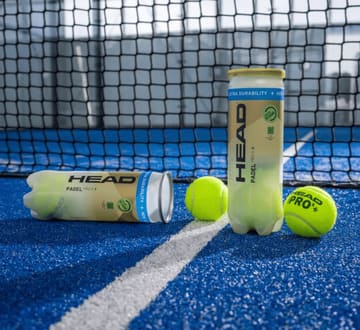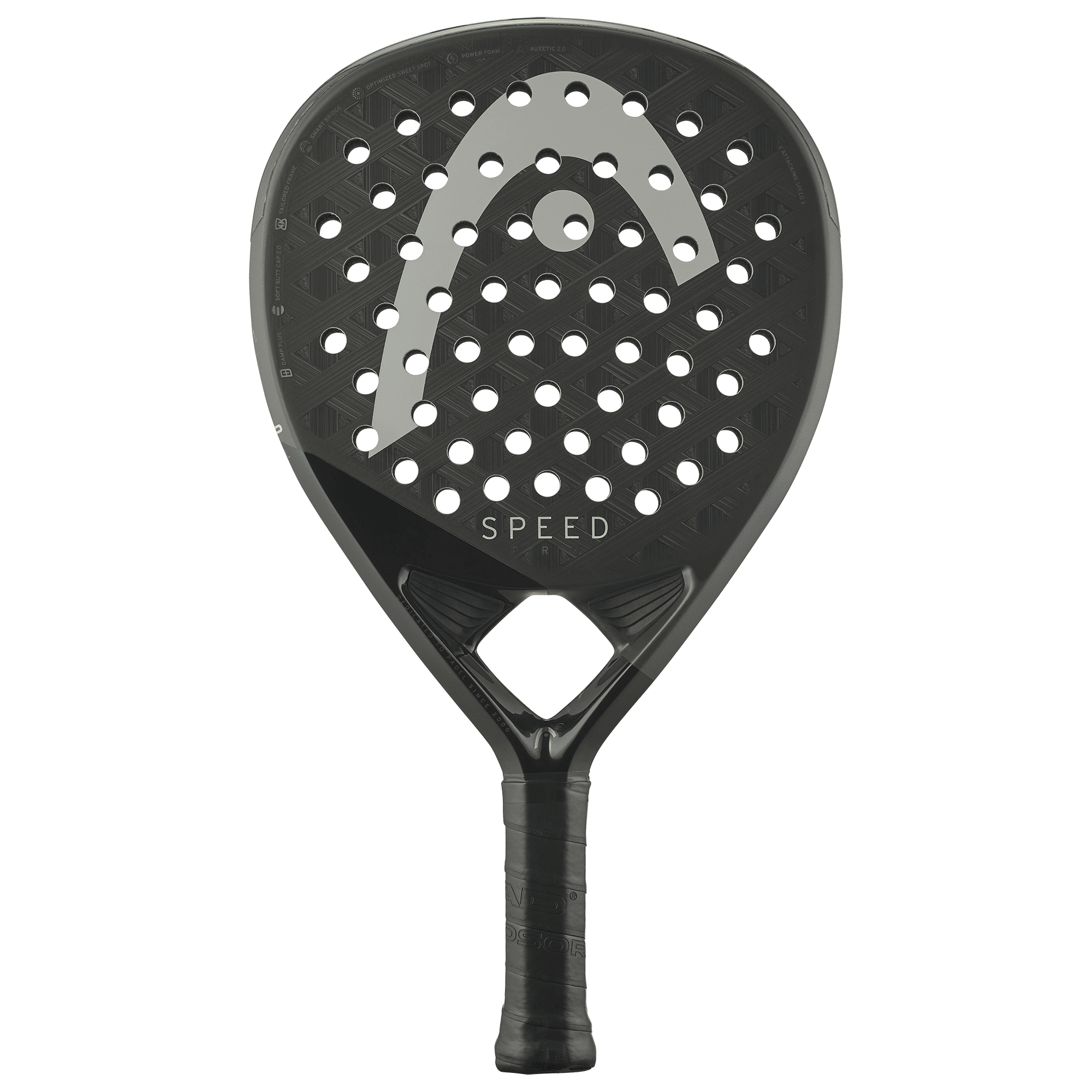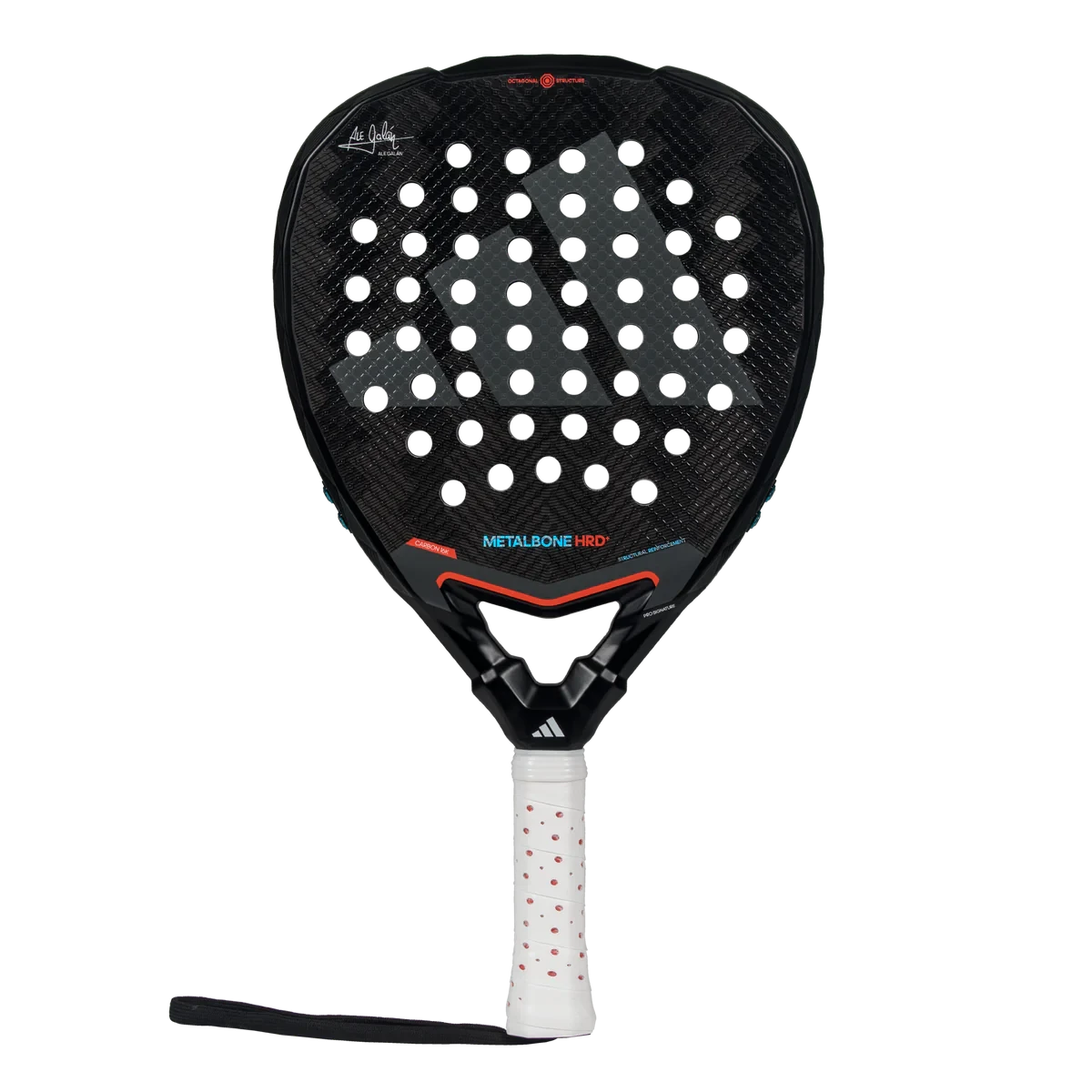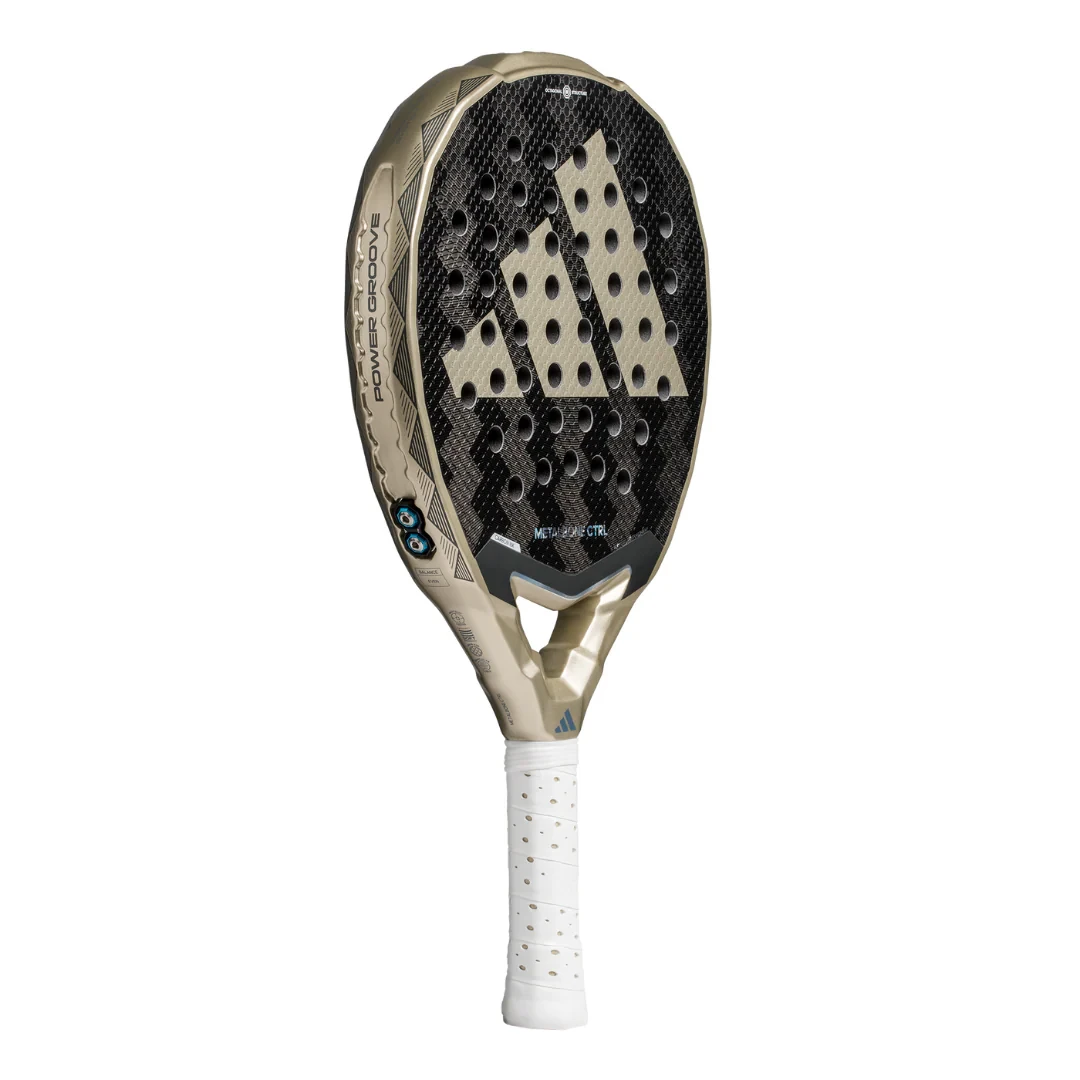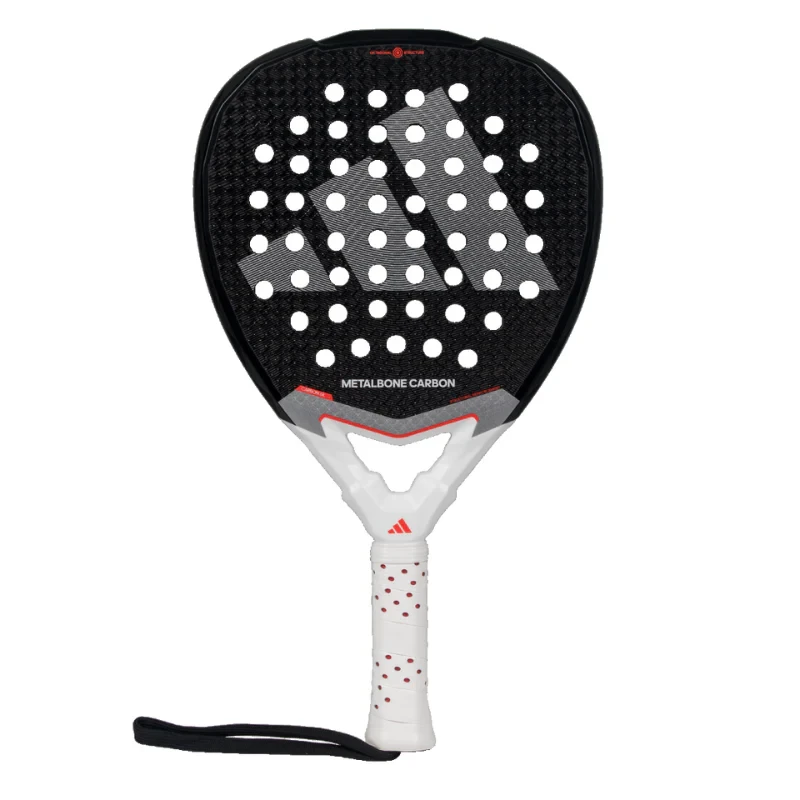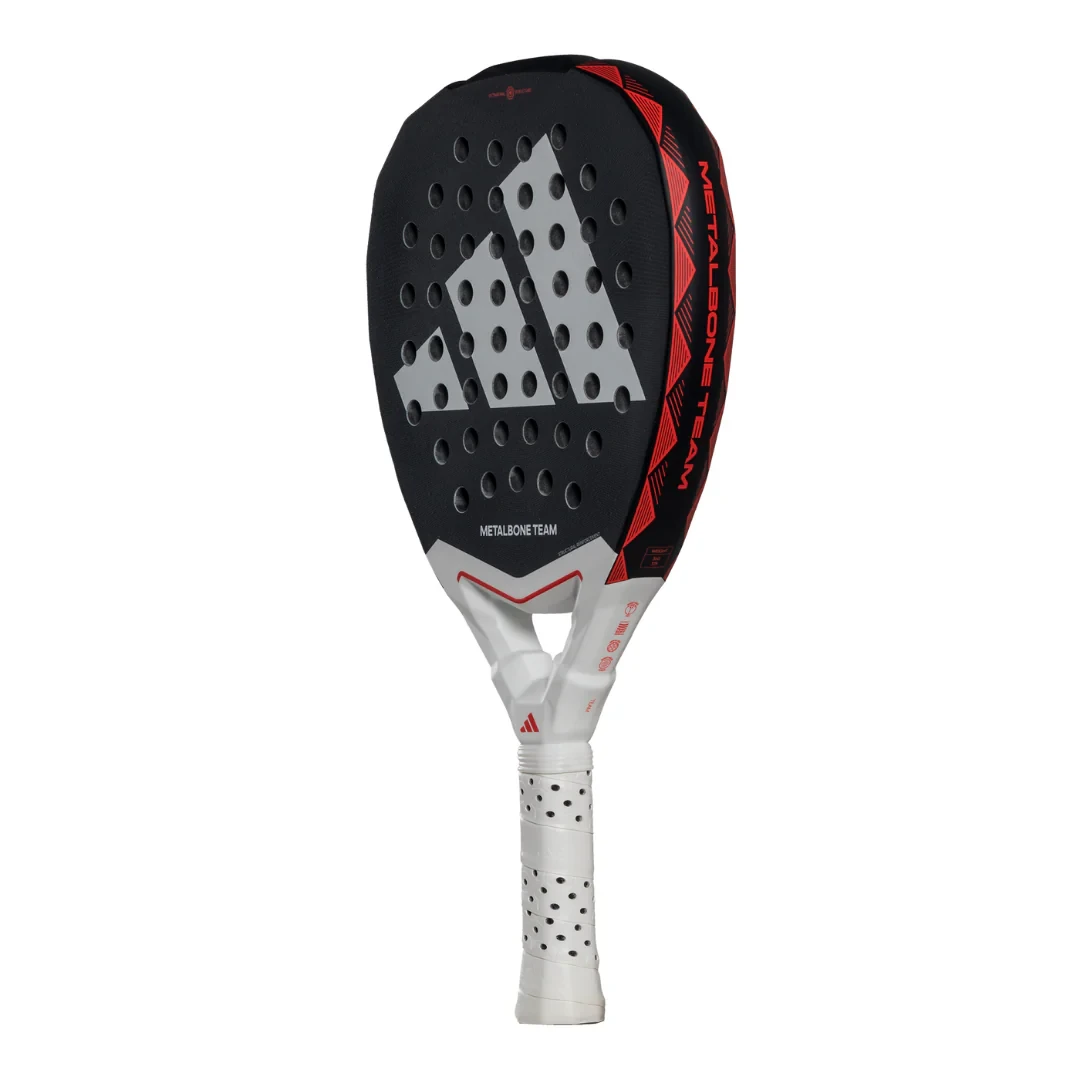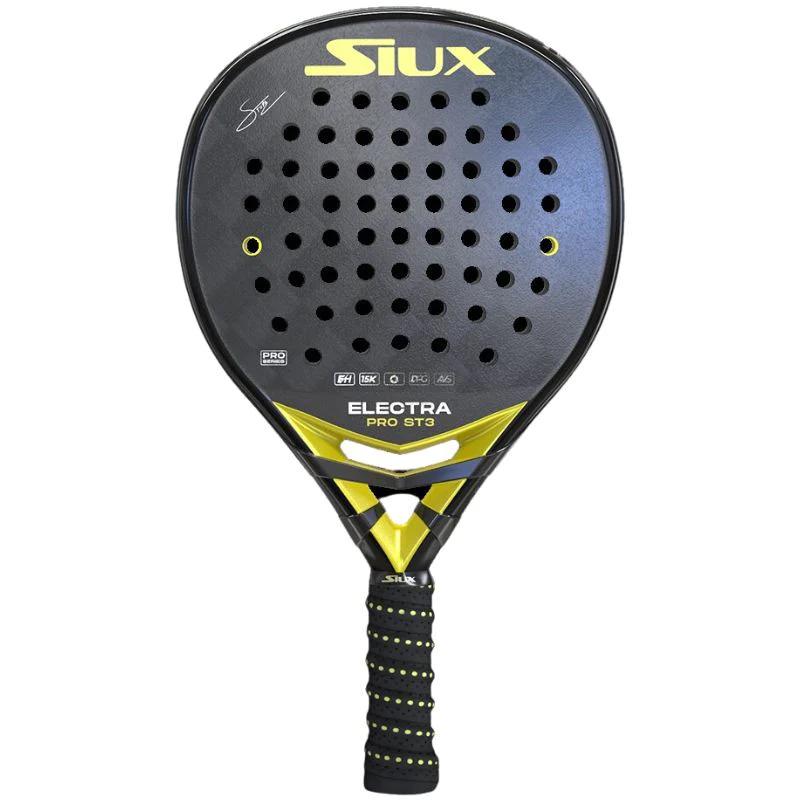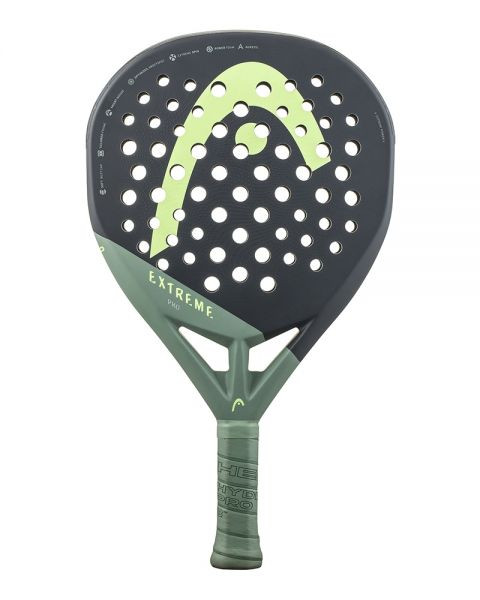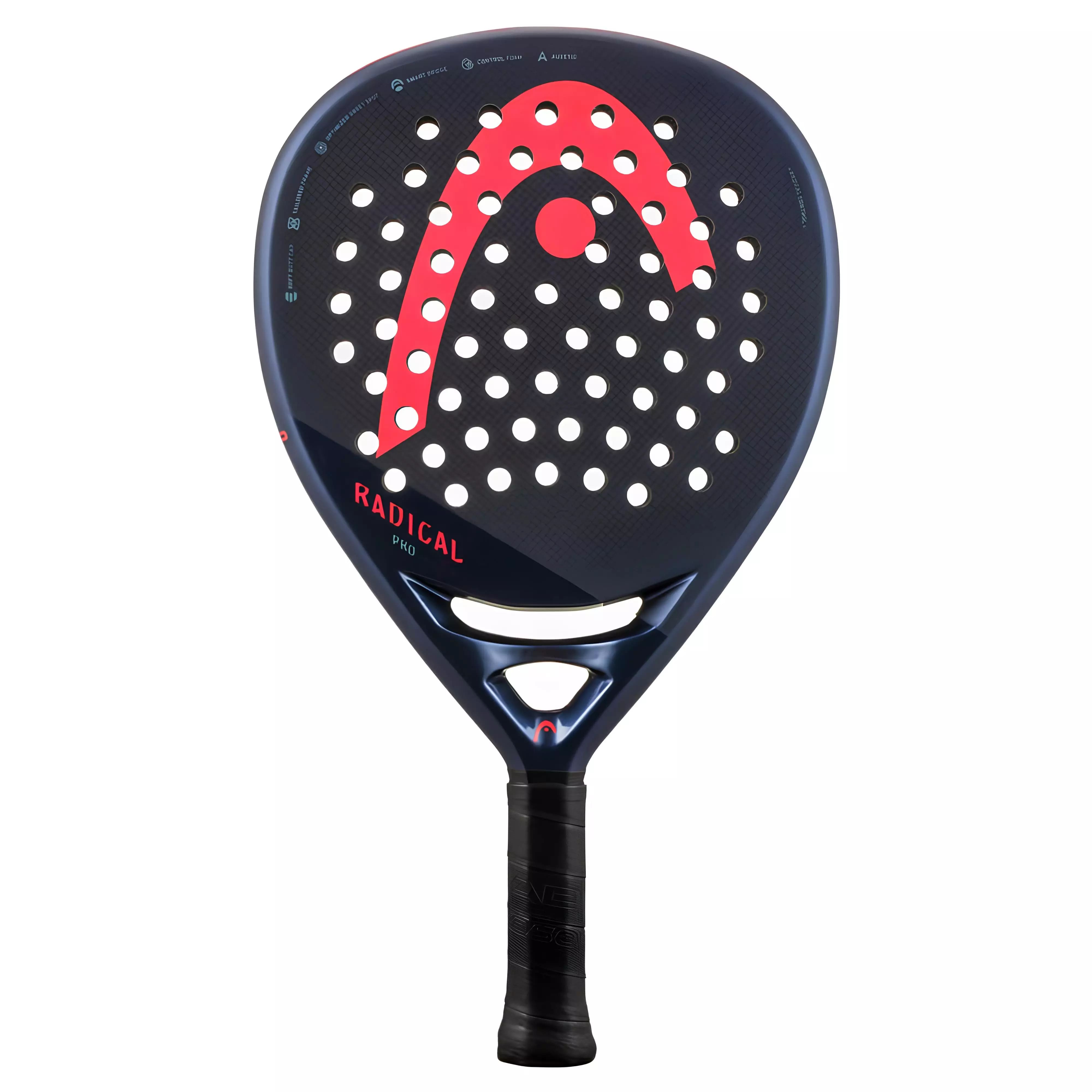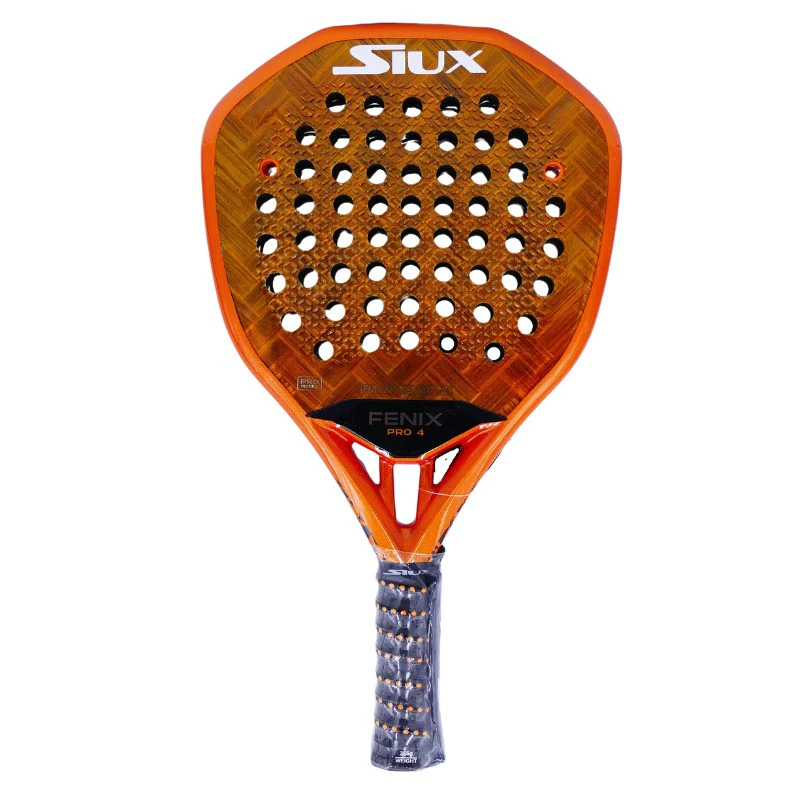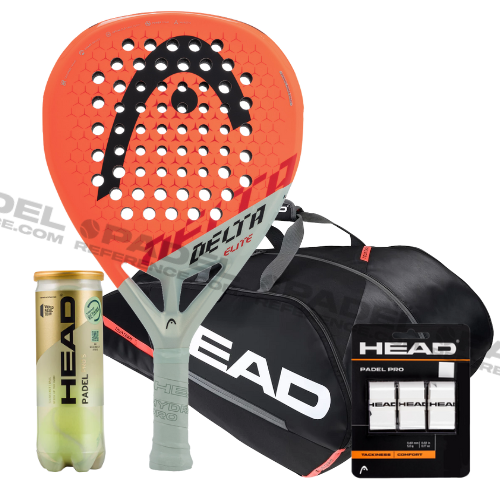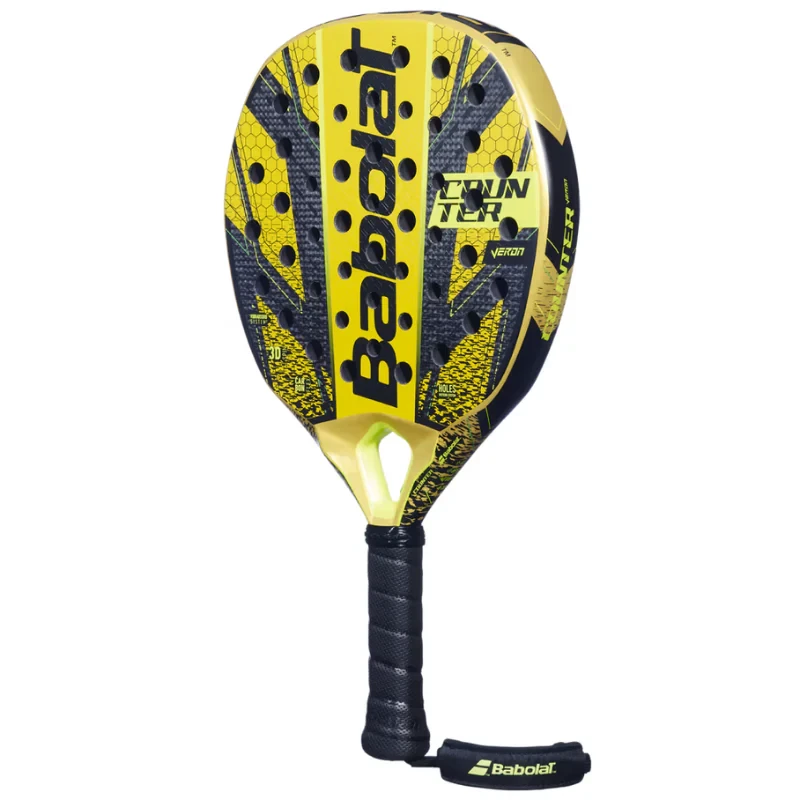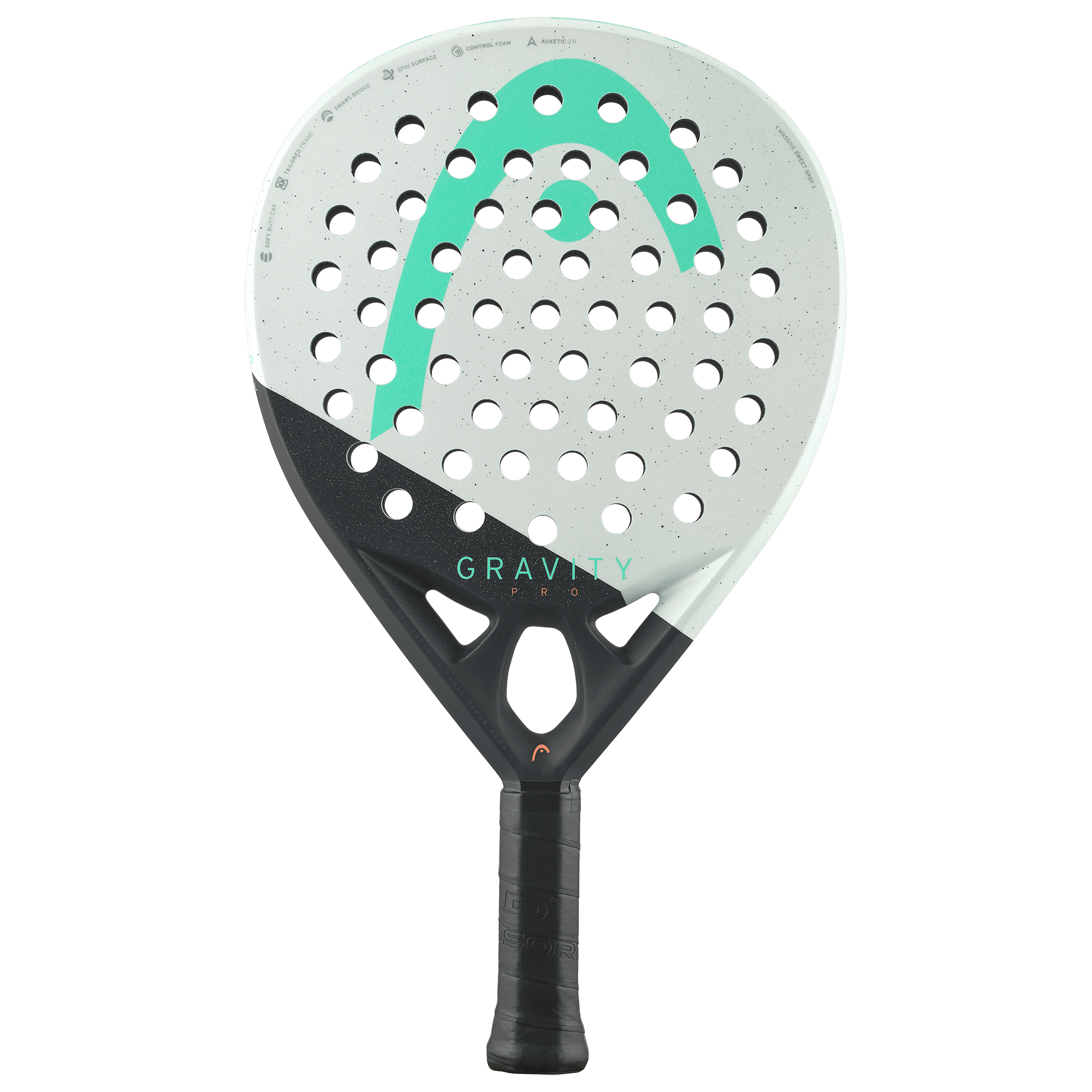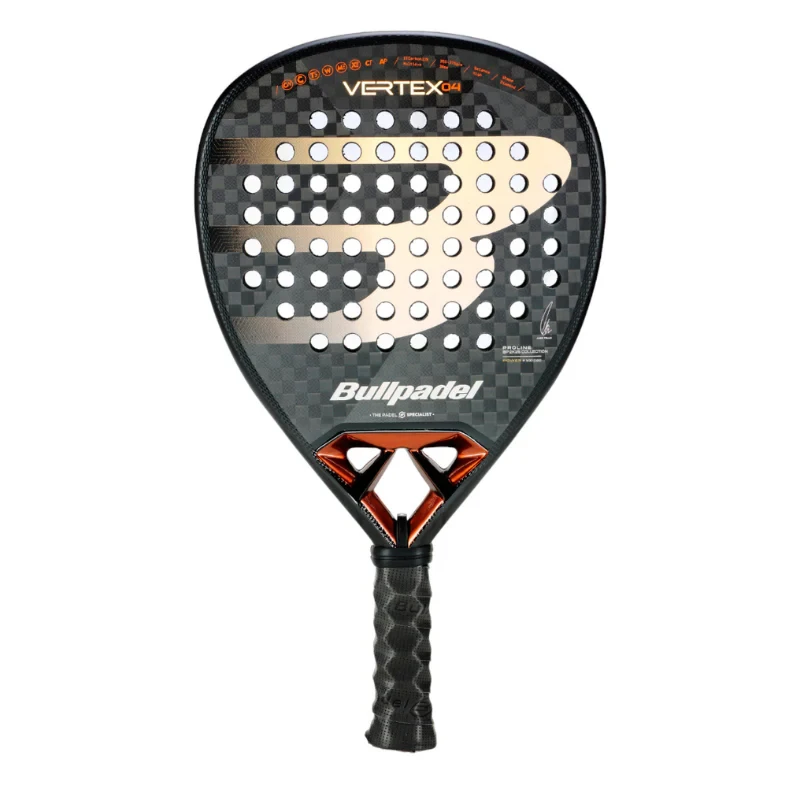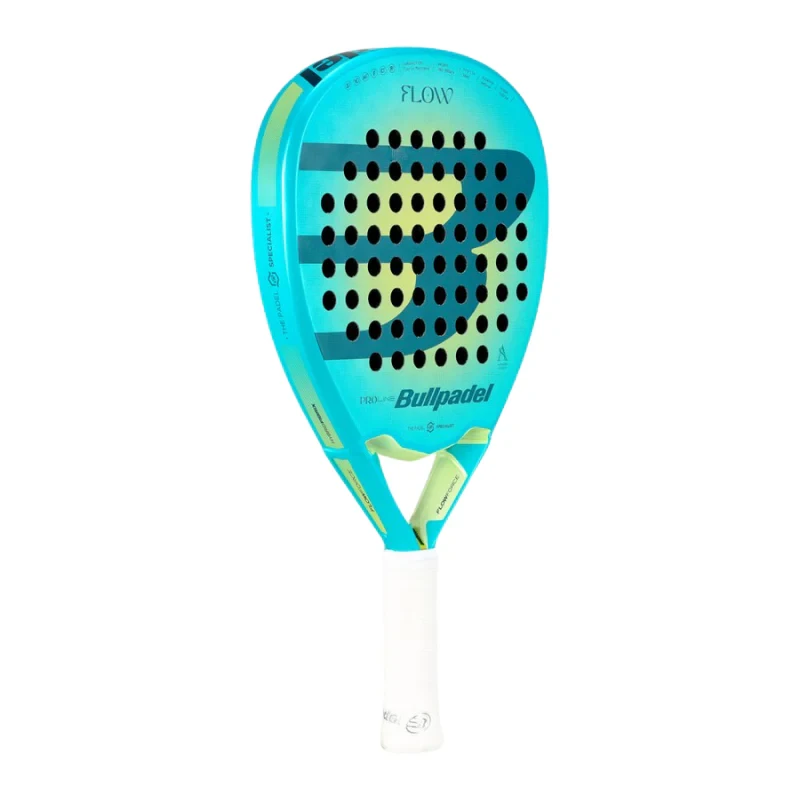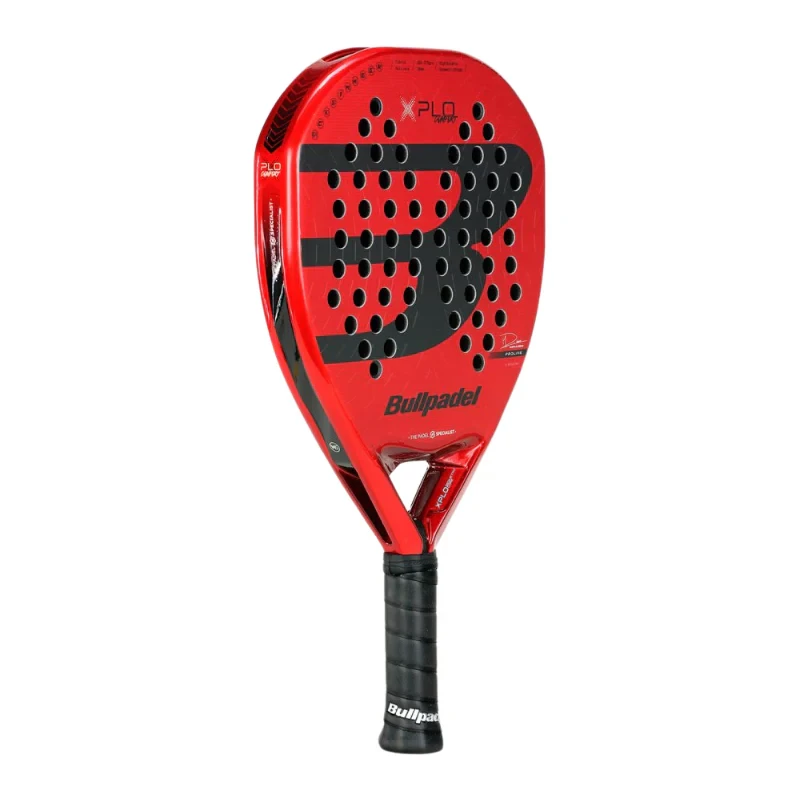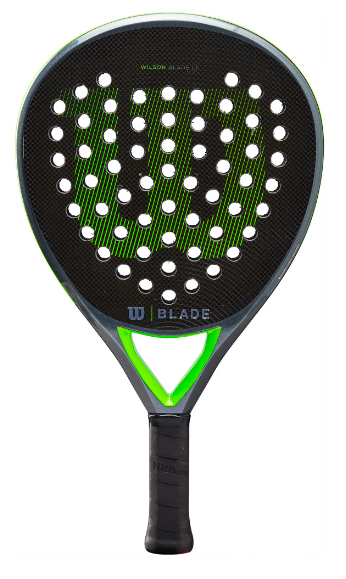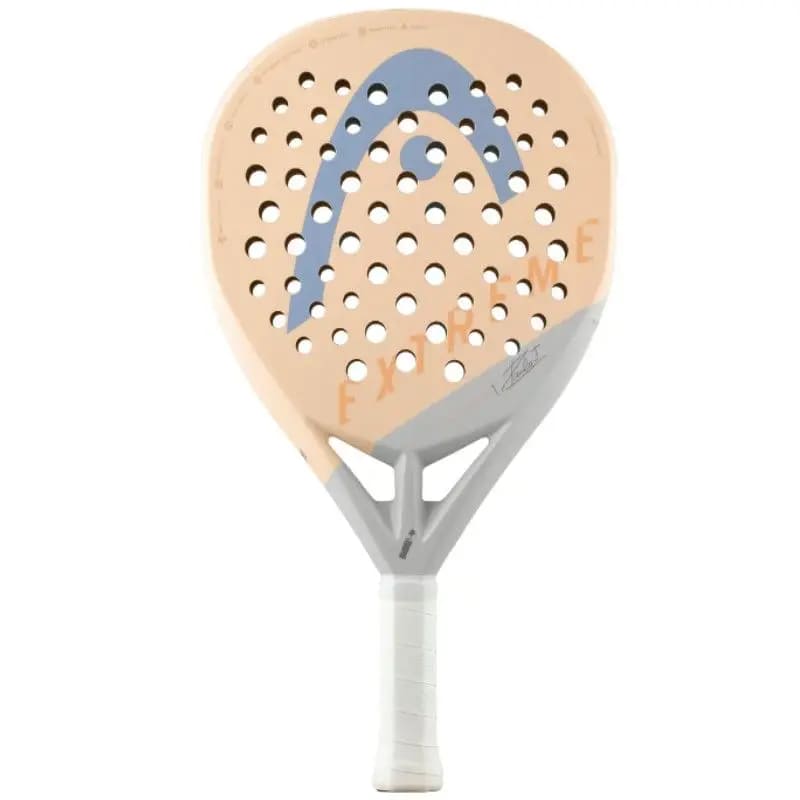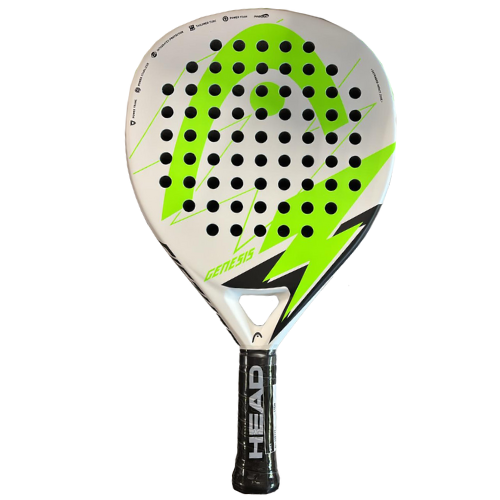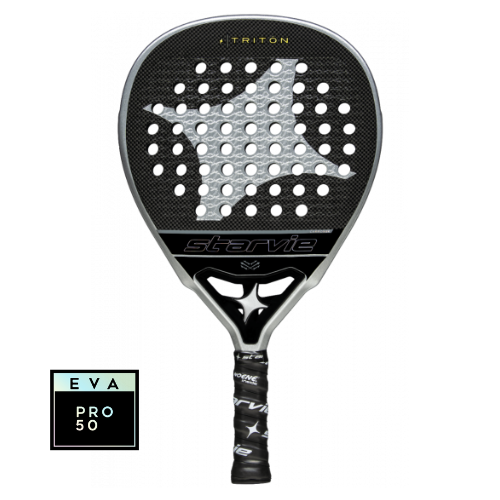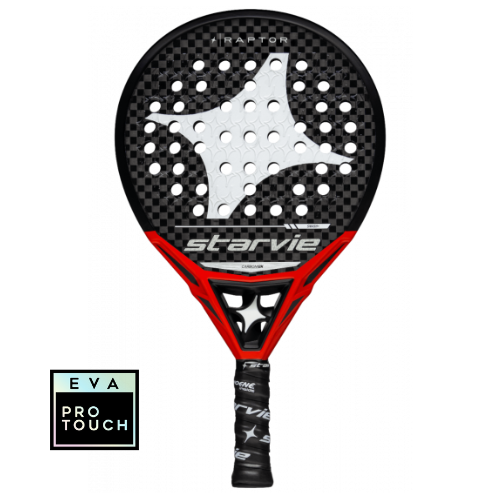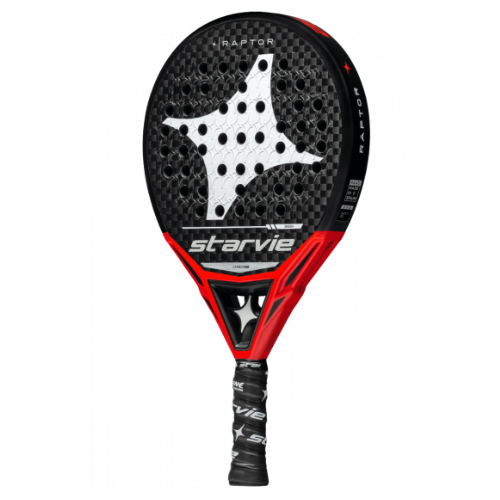Padel rackets
Welcome to our expert Padel racket page, where performance meets passion! Here, Babolat, Head, BullPadel, and Nox compete in innovation to offer cutting-edge equipment. Whether you're looking for power, control, or comfort, each brand brings its unique signature. Babolat with its legendary precision, Head synonymous with pure power, BullPadel for unmatched control, and Nox offering a perfect balance.
Our products Padel rackets
See all productsDo you need guidance for your first racket purchase? Answer our quiz and discover a personalized racket selection.
Take the testYour racket no longer suits you or is aging, take our test to find the ideal racket.
Take the testThe different types of padel rackets
There are mainly three types of padel rackets: control rackets, power rackets, and hybrid rackets. Control padel rackets are ideal for players who prioritize precision and tactics in their game. These rackets offer exceptional maneuverability and precision, allowing players to place the ball accurately.
On the opposite end, power padel rackets are suitable for players seeking more power. These rackets are heavier, with a wider head. This allows for easier hitting and adds more power to the strokes.
Hybrid padel rackets blend control and power, offering a good balance between precision and force for players. These rackets are perfect for versatile players who adapt their playing style according to the situation. Choosing the right padel racket is crucial to maximize your potential on the court.
The best padel racket brands
In the world of padel, the padel racket plays a central role in the player's performance. Among the best padel racket brands, there is Babolat. This brand is known for its innovative rackets, combining power and precision.
BullPadel is another prestigious brand, offering rackets with a unique design and excellent maneuverability, ideal for players of all levels.
Head offers rackets with advanced technologies, providing better precision and optimal control. Nox is famous for its rackets used by professionals, guaranteeing exceptional performance on the court.
The Adidas brand, with its expertise in sports, offers rackets that combine durability and design, perfectly suited for ambitious players.
Wilson, known for its commitment to developing high-quality sports equipment, offers a range of padel rackets varying in power and precision. Lastly, Siux stands out with its high-quality rackets chosen by advanced players for their precision and power.
Choosing a padel racket from these leading brands ensures players have high-quality equipment suited to their playing style and aspirations on the court.
How to choose your ideal padel racket
Finding the ideal padel racket is a crucial step for any player looking to improve their performance on the court. This choice requires a thorough analysis of several factors, such as playing style, skill level, body type, and personal preferences. Each player has specific needs when it comes to rackets, and understanding these needs is the key to selecting the perfect equipment.
For beginners, it is recommended to opt for light and balanced rackets that favor control and maneuverability. These rackets, often round with low weight, allow new players to focus on learning basic techniques without being overwhelmed by power or weight. A light racket helps reduce arm fatigue, facilitating extended rallies and minimizing injury risks.
Intermediate players will find a hybrid racket ideal, as it offers versatility that supports their progression, allowing them to develop a more complete playing style.
On the other hand, advanced players often seek power rackets, designed to maximize their striking ability. These rackets, usually diamond-shaped, have a head-heavy balance, which favors powerful shots and effective smashes. However, these rackets require good technical mastery and sufficient arm strength to avoid injuries.
Choosing your padel racket is crucial. The PalaMatch feature of Padel Reference simplifies this decision. It analyzes your playing style and preferences to recommend the ideal padel racket from the best brands. This tool uses advanced algorithms to analyze your playing style, level, and specific preferences, to recommend the most suitable padel rackets for your needs. An indispensable tool for any player.
How to maintain your padel racket
Maintaining your padel racket is essential for ensuring its optimal performance and extending its lifespan. A well-maintained racket offers not only better playability but also greater durability, avoiding frequent and costly replacements. The first step in maintenance is to regularly clean the surface of the racket with a soft cloth. This cleaning removes dust, dirt, and moisture that can accumulate after each match or training session. Removing these impurities prevents premature wear of the hitting surface, ensuring that the racket retains its original qualities.
In addition to surface cleaning, it is crucial to regularly inspect the racket frame for cracks, scratches, or deformations. The frame is the structure that supports the entire racket, and even small cracks can develop into more severe damage over time. Careful inspection allows you to quickly identify weakened areas that need special attention or repairs, preventing the racket from breaking or losing its performance during a game.
Using frame protectors is also recommended to minimize wear due to impacts against walls or the floor, common in padel play. These protectors, often made of plastic or composite materials, absorb the impact of hits and friction, protecting the frame and prolonging the life of the racket. Replacing these protectors as soon as they show signs of wear is a simple but effective measure to preserve your equipment.
It's also essential to store your padel racket in a dry place at moderate temperatures. Extreme weather conditions, such as prolonged exposure to heat, cold, or humidity, can damage the racket materials. For example, heat can soften the frame, while moisture can cause deformations or damage the inner foam. Using a protective cover or a suitable padel bag can help maintain optimal storage conditions, protecting your racket from temperature and humidity variations.
Finally, regular maintenance also includes replacing grips and overgrips to ensure a good grip. A worn grip can cause slippage and reduce control, increasing the risk of injury. Regularly changing the grip ensures not only better adhesion but also optimal comfort, essential to prevent blisters and arm fatigue.
Balance and weight: key factors in choosing a padel racket
The balance and weight of a padel racket are determining factors that directly influence the maneuverability, control, and power of the shots. The balance of the racket refers to the weight distribution along the frame, impacting the feel of the game and ease of use. A padel racket with a head-heavy balance, in a diamond shape, has more weight concentrated towards the hitting area.
This configuration increases inertia during hitting movements, allowing for powerful shots and explosive smashes. Offensive and experienced players who like to dictate the pace of the game with strong and aggressive hits find this type of racket ideal. However, this gain in power can reduce the racket's maneuverability, making quick adjustments more difficult, which can be a disadvantage in fast defense situations.
Conversely, a racket with a centered or low balance is designed to offer better maneuverability and increased shot control. With this configuration, the weight is more centered or oriented towards the handle, facilitating quick movements and direction changes. This type of balance is particularly suitable for control-focused players who prefer quick exchanges at the net or effective defenses near the walls. This configuration allows for fast volleys and precise defensive shots, giving players the ability to maintain control of the game even during fast and intense phases of play.
The weight of the racket is equally crucial and should be chosen based on the player’s body type, physical strength, and skill level. Lightweight rackets, typically weighing between 340 and 360 grams, are perfect for beginners, young players, or those seeking more speed and maneuverability. A lightweight racket helps reduce arm fatigue and allows for easier execution, which is essential for developing good technical foundations without the risk of injury. Players who enjoy a fast-paced and reactive playing style will also benefit from the advantages of a lighter racket.
On the other hand, heavier rackets, weighing between 370 and 380 grams, are designed for more experienced players with good technique and sufficient physical strength to handle a heavier racket without sacrificing maneuverability. The extra weight of a heavier racket helps stabilize shots, promotes more powerful strikes, and better absorbs the impact of the ball, which is particularly useful during smashes or lifted lobs. However, a heavier racket can lead to increased fatigue of the arm and wrist, so proper physical preparation is necessary to avoid injuries.
The different shapes of padel rackets
Padel rackets generally have three main shapes: round, teardrop, and diamond.
Round rackets are the most popular among beginners due to their large sweet spot located in the center of the racket, allowing better control and great maneuverability. They are ideal for those looking to improve their precision and technique, as they reduce the chances of errors during hits.
On the other hand, teardrop-shaped rackets are an excellent compromise between control and power. Their sweet spot is slightly higher, providing more power while maintaining good precision. They are suitable for intermediate players who wish to balance their game.
Finally, diamond-shaped rackets are distinguished by their sweet spot located higher, near the top of the racket. They are designed for advanced players seeking maximum power in their shots. However, they require good technical mastery as they offer less tolerance for errors. This type of racket is ideal for attackers who favor smashes and powerful shots. In summary, the choice of racket shape depends on the level of play and the desired style.
The foams used in padel rackets
The foams used in the core of a padel racket play a crucial role in the feel of the game, power, control, and comfort. They influence how the racket reacts to each hit, as well as the level of comfort experienced by the player. There are two types: EVA foam and Polyethylene foam (FOAM), each with its own characteristics and advantages. EVA foam (Ethylene Vinyl Acetate) is denser, harder, and stiffer, offering excellent ball control and increased durability. This type of foam is particularly suited for players seeking power and precision, as it promotes greater energy transfer during impacts. EVA foam is ideal for players who prefer an offensive and aggressive playing style, where precision and shot strength are essential.
Conversely, FOAM is softer and lighter, allowing better rebound and increased vibration absorption. This type of foam provides more comfort, making it perfect for players who enjoy a softer, effortless game. FOAM is particularly effective in minimizing the impact of vibrations on the arm, thus reducing the risk of fatigue or injury, especially tendonitis. Rackets with FOAM offer greater tolerance, making them ideal for beginners or those with a control and defensive-oriented playing style.
Some padel racket brands innovate by combining these two types of foams, EVA and FOAM, in the core of the racket. This combination creates an intermediate foam that balances the characteristics of both materials. This hybrid core offers an excellent compromise between power, control, and comfort, allowing players to benefit from the rigidity and durability of EVA foam while enjoying the softness and vibration absorption of FOAM. This hybrid approach is ideal for versatile players who like to vary their playing style depending on their opponents or match conditions.
The choice of foam in a padel racket depends on the player’s playing style, skill level, and personal preferences. Players looking to maximize their power and precision will opt for a denser EVA foam, while those seeking a comfortable and softer playing experience will prefer a FOAM with a softer composition. For intermediate players or those looking for a versatile racket, rackets with hybrid foam are often the best option, as they allow for easy adaptation to different game situations.
The role of materials in padel rackets
The choice of materials used in a padel racket is fundamental in determining its performance, durability, and comfort, directly influencing the player's playing style.
Among the most commonly used materials, fiberglass is appreciated for its flexibility and control. Fiberglass is relatively flexible, which allows better absorption of vibrations, thus reducing arm fatigue. This makes it an excellent choice for beginners and intermediate players who are looking for a forgiving and comfortable racket, facilitating the learning of basic techniques. In addition to its comfort, fiberglass provides good control, allowing precise ball placement and better maneuverability. However, fiberglass rackets may be less durable than those made of more rigid materials, and they may lose effectiveness after intensive use.
On the other hand, carbon is a rigid and light material used in padel rackets to enhance power and durability. Carbon rackets are often preferred by advanced players seeking more power. The rigidity of carbon allows greater energy transfer during strikes, generating more speed and force. Additionally, the lightness of carbon maintains good maneuverability without sacrificing power. Due to their high resistance, carbon padel rackets are also more durable and can withstand intensive use without deforming or losing their qualities.
Some padel rackets combine these two materials, fiberglass and carbon, to offer a perfect balance between flexibility and rigidity. This type of hybrid construction allows for a racket that combines the advantages of both materials: the flexibility and comfort of fiberglass, combined with the power and durability of carbon. These rackets are ideal for versatile players who seek to adapt their playing style according to on-court situations, whether it’s striking hard to win points or defending with precision and control.
























